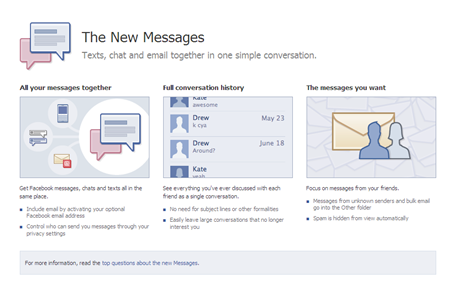eDiscovery Trends: Social Media Policies to Manage Risk

As noted previously, ALM hosted another Virtual LegalTech online “live” day online last week. We’ve talked about the session regarding Predictive Coding here and here.
Another session from last week’s “live” day was Facing the Legal Dangers of Social Media. The speakers for this session were:
- Harry A. Valetk: Internet Safety and Consumer Privacy Attorney, MetLife Privacy Office;
- Daniel S. Goldman: Chair of Mayo Clinic’s business law practice group which oversees the corporate law, contracting and intellectual property functions of the Mayo Clinic legal department.; and
- Michael E. Lackey, Jr.: Partner and co-chair of the Electronic Discovery and Records Management Practice for Mayer Brown LLP.
Establishing boundaries between your professional life and personal life continues to be more challenging as more personal information is available online. The session cited a handful of cases where terminations resulted from postings on individuals’ personal social media accounts, one of which was challenged by the National Labor Relations Board (NLRB). At least one state has rules in place – Section 201-d(2)(c) of New York’s Labor Law protects “legal recreational activities” engaged off-site during nonworking hours.
An interesting stat from the session was that “27% of employed Internet users now work for employer[s] with policies about how they may present themselves online”. As noted previously in this blog, having a social governance policy in place is a good idea to govern use of outside email, chat and social media that covers what employees should and should not do. From the session, here are some factors that a good social governance policy should address:
- Educate: The social governance policy should be accessible and all employees should receive training with examples that illustrate what may not be obvious to everybody,
- Plan for Crises: The speed and reach of social media means that a crisis will happen fast. Identify a crisis team and develop a plan to react quickly. When disgruntled employees of Domino’s pizza posted a video, showing them tainting food, Domino’s management reacted quickly.
- Plagiarize: Yes, plagiarize. As in, there are many good ideas already implemented out there for social governance, don’t reinvent the wheel.
- Use of Social Media During Work: Some companies will try to ban the use of social media during work by banning access to sites via work computers, but employees can simply access those sites on mobile devices, so it’s better to establish an expectation of level of acceptable use.
- Preserve Customer Privacy: Any policy must stress the importance of this.
- Identify Company Spokespersons: Establish who can speak on behalf of the company and make clear to others to stress that any views they espouse online are personal views.
- Address the Blurring of Boundaries: Employees should not exhibit inappropriate behavior on social media when identified as employees, and there should be no association with the employer for any behavior incompatible with the brand/profession.
- Business Confidentiality: Don’t discuss trade secrets or other confidential information online. Even posting that you’re attending a meeting with a company that you’re negotiating with can violate NDA agreements.
- Prohibit Employees from Speaking Anonymously: It’s considered unethical at best and may be an FTC violation at worst as John Mackey, Whole Foods CEO, found out back in 2007.
- Don’t Harass: If it’s unacceptable behavior in the workplace, it’s unacceptable online. Not to mention gutless. And, employers can be liable if they’re aware of harassing behavior online and don’t act to address it.
Tomorrow, we’ll discuss the discoverability and use of social media content in litigation. As noted with the predictive coding session, you can check out a replay of the session at the Virtual LegalTech site. You’ll need to register – it’s free – then login and go to the CLE Center Auditorium upon entering the site (which is up all year, not just on “live days”). Scroll down until you see this session and then click on “Attend Now” to view the replay presentation. You can also go to the Resource Center at the site and download the slides for the presentation.
So, what do you think? Does your organization have a social media policy in place? Please share any comments you might have or if you’d like to know more about a particular topic.






